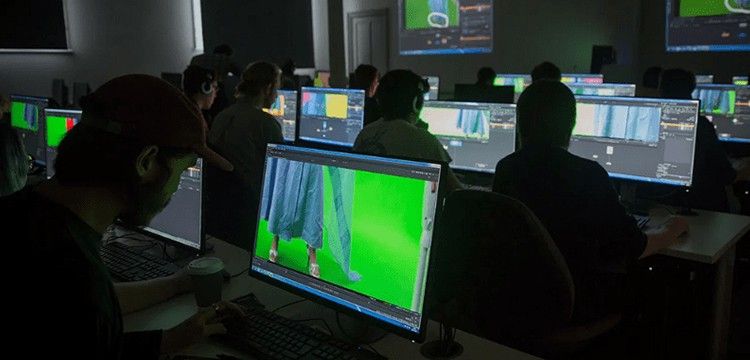━━━━━━━━━━━━━━━━━━━━━━━━━━━━━━━━━━━━━━
Assignment 1 –
- Start Presenting: 8th of December 2025
- Submission Date: 5th of January 2026 (Week 13)
- Investigative Study Proposal:
32121608_Weronika Kałkucka_Investigative_Study_Proposal
Essay Structure
- Intro
Lit review
Methodology
Discussion / Finding / Research Section
Conclusion
My research paragraph structure
- Introduction to the topic
- History of it examples of how its developed and how the approaches stay quite similar although the technology changes – E.g super old cinema. vs old jurassic park vs now modern digital stuff
- How does creating real animals vs hybrids/completely fantastical compare and how do we achieve realism in both by focusing on the below points – examples and comparison between The Crown deer vs for example hobbit/rebel moon/game of thrones
- Modeling aspect – comparative anatomy, bony landmarks, what to focus on, workflow on creating a texture/groom ready model, examples of breakdowns for models and artists as examples
- Grooming/FX aspect (although mostly groom) – things to keep in mind and I need to dive into it more with examples
- Case studies: breakdowns etc
- Reflection and personal application in practice – my experience, how I went about and explored, resources I’ve used to get into as I’m building a portfolio in creature art – reindeer project which I’m modeling and planning to groom
Connect your findings to your own creative growth — how understanding anatomy and grooming informs your modeling and portfolio development. – also link it looking for a job as a junior what people look for etc
- Sources
– Academic
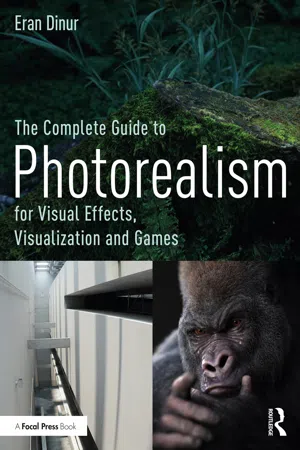
The Complete Guide to Photorealism for Visual Effects, Visualization and Games – Eran Dimur – https://www.perlego.com/book/2529506/the-complete-guide-to-photorealism-for-visual-effects-visualization-and-games-pdf
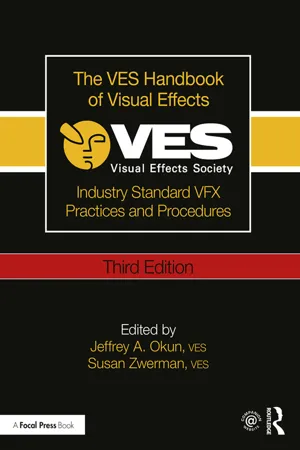
The VES Handbook of Visual Effects
Industry Standard VFX Practices and Procedures – https://www.perlego.com/book/1628670/the-ves-handbook-of-visual-effects-industry-standard-vfx-practices-and-procedures-pdf?queryID=e9ec8cc132e2cd52f8e59005349bdc2f&index=prod_BOOKS&gridPosition=7&searchType=title
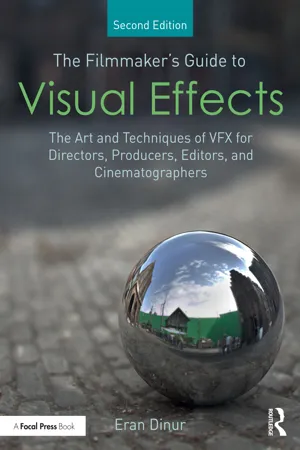
The Filmmaker’s Guide to Visual Effects
The Art and Techniques of VFX for Directors, Producers, Editors and Cinematographers Eran Dimur
https://www.perlego.com/book/4177307/the-filmmakers-guide-to-visual-effects-the-art-and-techniques-of-vfx-for-directors-producers-editors-and-cinematographers-pdf?queryID=e9ec8cc132e2cd52f8e59005349bdc2f&index=prod_BOOKS&gridPosition=4&searchType=title
- The Core Skills of VFX (TOPIC 008: Rigging & Creature Effects for VFX & TOPIC 009: Digital Sculpture) https://a.storyblok.com/f/181110/x/5afa32100a/the_core_skills_of_vfx_-_repository.pdf?utm_source=chatgpt.com
- Fundamentals of Creature Design: How to Create Successful Concepts Using Functionality, Anatomy, Color, Shape & Scale (3dtotal Publishing, 2020)
- https://store.3dtotal.com/products/fundamentals-of-creature-design?srsltid=AfmBOorAgN6r7y5qXuwfPVP_I0ZL589q0k6mGTRsLd4yigof4bwgLwX3
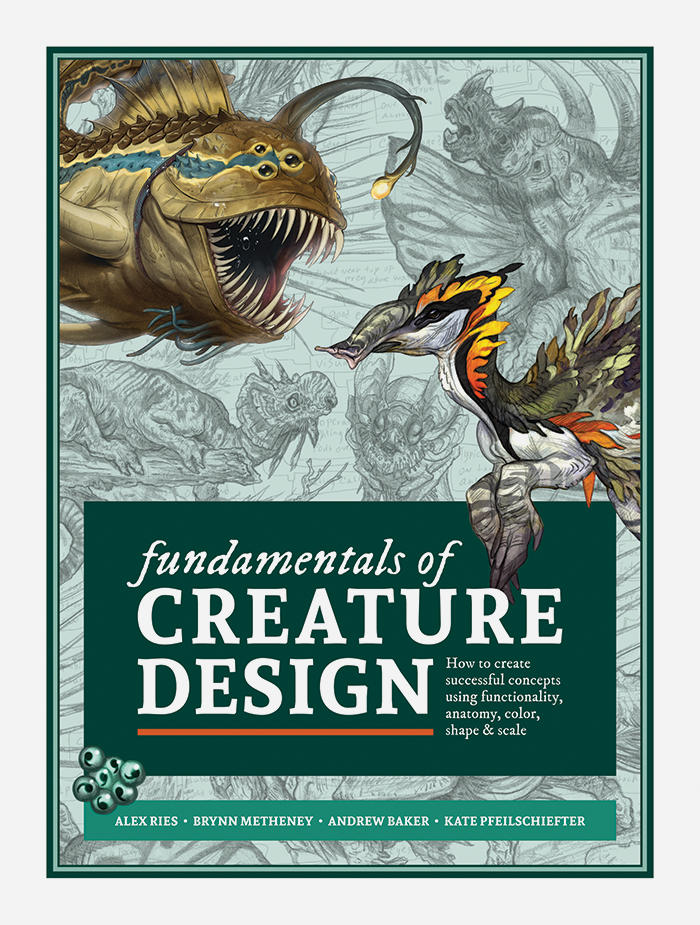
Animal Anatomy for Artists: A visual guide to the animal form
- The Science of Creature Design: Understanding Animal Anatomy (Terryl Whitlatch, Design Studio Press)
– Industry Talks
– Breakdowns:
Insider (2019) How The Game of Thrones Dragons Were Designed | Movies Insider. [Video]. YouTube. Available at: https://www.youtube.com/watch?v=qX963EvTkNA [Accessed 21 Oct. 2025].
Screen Bites (2023) Making The Dinosaurs | Jurassic Park Documentary (1993) | Screen Bites. 15 November. [Video]. YouTube. Available at: https://youtu.be/8r01mk6F_Pk [Accessed 21 Oct. 2025].
━━━━━━━━━━━━━━━━━━━━━━━━━━━━━━━━━━━━━━
Week 1 – Introduction To The Investigative Study Module & Digital Deepfakes
During our first class of the Investigative Study module, we were introduced to the structure of the course and given a rough outline of what to expect in the coming weeks. We were also told that this module offers us greater freedom to explore areas we’re personally interested in, whether that means specializing further or diving deeper into a specific topic. While Years 1 and 2 focused on developing our critical thinking skills alongside the technical and software knowledge essential for VFX, the final year is about applying those skills in the most effective and meaningful way.
Assignment details
The essay will be a research project, and it will involve:
- A question
- Aims and objectives
- A literature review
- Research plan (methodology)
- Both practical and contextual (theory/reading) research
- Reflection on findings; written analysis in the essay
- Documenting findings as you go, as visual and written evidence on digital sketchbook ,,done as a progression visible on digital sketchbook”
You will need to:
- Identify an aspect of VFX which interests you for your research area – 3D Creature Art
- Develop a short written proposal and relevant question by week 4
- Write an initial chapter a literature review or methodology
- Create a method for the research
- Do the practical and or literary reading research
- Write up the ressay with findings and conclusions
━━━━━━━━━━━━━━━━━━━━━━━━━━━━━━━━━━━━━━
Growing industry divide between traditional film making techniques and CGI

https://www.hollywoodreporter.com/movies/movie-news/frankenstein-christoph-waltz-guillermo-del-toro-filmmaking-cgi-1236357587/
What does Waltz gain by saying CGI is For Losers?
However, the statement is deeply ironic and hypocritical, especially given Waltz’s own career. He’s starred in several CGI-intensive films, most notably Alita: Battle Angel, where digital effects are essential to the story and visuals. This makes it clear that Waltz is not opposed to CGI in principle; instead, his comment is more about positioning Frankenstein as part of a different, more “serious” or “prestigious” filmmaking tradition.
Moreover, the phrase “no CGI” or “CGI is for losers” ignores the reality that even films branded as practical-effects-driven almost always use invisible digital effects such as wire removal, background extensions, or subtle compositing that audiences never notice. So, no film today is truly free of CGI, making such comments misleading at best.
Even if Waltz’s remark was meant jokingly or offhandedly, the consequences of that kind of rhetoric are significant. It contributes to a persistent narrative that digital visual effects are somehow less artistic or “fake,” which diminishes the immense creative labor and technical skill of VFX artists. Their work is crucial in modern filmmaking but often goes unrecognized, and comments like Waltz’s reinforce their invisibility and the devaluation of their craft.
While Waltz’s comment may have been popular and made to promote a film celebrating practical effects, it is at odds with his own filmography and misrepresents the role of CGI in modern cinema. Such statements, whether serious or in jest, ultimately do more harm than good by undermining the valuable contributions of visual effects artists.
What does the phrase CGI is for losers mean and why do viewers actors relate to it?
The phrase “CGI is for losers” is a provocative way of saying that relying on computer-generated imagery is seen as a shortcut or a less honorable approach to filmmaking. It suggests that filmmakers who use CGI are somehow taking the easy way out, avoiding the “real” work of creating practical, physical effects or shooting in-camera. This kind of statement taps into a long-standing bias that practical effects are more authentic, skilled, or “pure,” while CGI is often unfairly labeled as fake, lazy, or less artistic. Essentially, it’s a blunt dismissal of digital effects as inferior or less valuable compared to traditional filmmaking techniques.
This phrase reflects a common sentiment among some viewers and actors who value practical, hands-on filmmaking. Many fans and performers grew up watching movies made with physical sets, real stunts, and tangible effects, which can feel more immersive and emotionally “real.” For them, practical effects create a stronger connection between actors and their environment, making performances more genuine. Actors especially might prefer working on real sets rather than imagining things against green screens, so they sometimes share the belief that practical effects are more “authentic” or demanding of true craft.
On the other hand, directors often hold a more nuanced and reasonable view. During the conference referenced in the Hollywood Reporter article, filmmakers like Guillermo del Toro explained how digital and practical effects are not enemies but tools that complement each other. Directors see CGI as just another technique in the filmmaker’s toolbox, one that can expand creative possibilities and enhance storytelling when used thoughtfully. They understand that many modern films blend both methods seamlessly, and that dismissing CGI outright ignores the skill, artistry, and labor that go into visual effects work.
Why do some filmmakers mark their films as ”no CGI” as if that’s something to look up to / strive for?
Some filmmakers say “no CGI” as a way to emphasize their commitment to realism, craftsmanship, or traditional filmmaking techniques. This statement often comes from a desire to distance their film from what they see as overused or artificial-looking digital effects, which are sometimes criticized for being too clean, weightless, or distracting. In other cases, it’s a marketing strategy – promoting the film as more grounded or authentic, often to appeal to audiences who are tired of blockbuster-style visuals.
There’s also a romantic idea that practical effects (things built and filmed on set) are somehow more “real” or artistic than anything created digitally. However, even in films that claim to use “no CGI,” visual effects are almost always still present in invisible ways, such as digitally removing wires, combining different shots, or enhancing lighting and environments. So while the phrase might sound impressive, it rarely means what it literally says.
Framestore’s Response to Waltz’s “CGI is for Losers” Remark
In response to Waltz’s provocative “CGI is for losers” comment, the Framestore CEO suggested he might have been joking or trying to be provocative, but emphasized that it’s not a fair take on CGI. She pointed out that CGI is simply a tool that can greatly enhance a film, if used skillfully. To make CGI work well, filmmakers need to plan carefully and shoot properly, so the digital effects support the story instead of overwhelming it. This balanced view highlights that CGI requires creativity and expertise, and dismissing it outright overlooks its true artistic value.
Do such claims help or hurt visual effects as an art form?
In general, these kinds of claims hurt visual effects as an art form. When directors or studios say they used “no CGI,” they often ignore or erase the huge amount of work that visual effects artists actually did on the film, even if those effects are invisible or subtle. This devalues the creativity, time, and effort involved in digital artistry, and it reinforces the false idea that VFX is just a tool for flashy, over-the-top action scenes. In reality, VFX is a complex and creative discipline that includes lighting, animation, digital compositing, environmental effects, and much more. When that work is denied or downplayed, it becomes harder for the public to appreciate it, and harder for the people doing that work to get the recognition they deserve. It also affects how awards, funding, and job opportunities are distributed in the industry, often giving more credit to the “visible” and “respected” parts of a film while ignoring the hidden contributions of digital artists.
Visual Effects as an art form in all it’s specializations requires a high level of artistry and skill – dismissing that is not only factually untrue but also hurtful towards often underpaid and overworked VFX artists.
How is VFX labour made invisible by these comments?
These kinds of comments make VFX labour invisible by framing it as something that either wasn’t used or wasn’t important. When a filmmaker says “we didn’t use CGI,” it suggests that there were no digital artists involved – even though, in almost every case, there were many. Their work might include removing unwanted background elements, enhancing lighting, combining different pieces of footage, or fixing practical mistakes – all things that audiences don’t consciously notice. Because this work is designed to be seamless, it’s easy for people to forget that it’s even there. But when filmmakers then claim that everything was done “in-camera,” they take away credit from the people who helped make that seamlessness possible. This contributes to a broader pattern where VFX workers are under-credited, underpaid, and left out of the story of how a film was made. Their labour becomes “invisible” not because it doesn’t exist, but because the industry chooses not to talk about it.
Does it imply digital media is somehow less “true” than analogue film? Why?
Yes, when filmmakers claim they used “no CGI,” it often implies that digital visual effects are somehow less “true,” less authentic, or less artistic than analogue film or practical effects. This belief comes from a long-standing cultural idea that what’s physically filmed – such as real explosions, real stunts, actual locations – has more weight or credibility than something created on a computer. There’s a nostalgia attached to traditional filmmaking methods, especially those from the pre-digital era, which some people associate with a more “pure” or “hands-on” approach to cinema.
However, this creates a false divide between analogue and digital methods. In reality, digital visual effects didn’t appear out of nowhere – they actually evolved directly from practical, physical effects. Techniques like matte painting, miniature models, stop-motion, and optical compositing laid the foundation for today’s digital VFX. Many of the skills, ideas, and creative approaches from those earlier eras are still very much alive, just expressed through new tools and technologies.
What’s often overlooked in the “no CGI” discourse is that practical and digital effects are not enemies and instead they actually complement each other beautifully when used well together. Some of the most effective and convincing moments in modern film come from a careful balance between the two. For example, a real set or stunt might be enhanced digitally to add scope, atmosphere, or danger, while CGI creatures or environments often rely on real lighting references and practical textures to look convincing. When used thoughtfully, practical and digital effects can support each other in creating immersive, emotionally resonant, and visually stunning experiences.
So the idea that digital media is “less true” is not only misleading but it also erases the deep connection between traditional film techniques and modern digital artistry. Both are valid, both are creative, and both are essential parts of contemporary storytelling.

Industrial Light and Magic’s work on first Star Wars films can serve as an example of analogue film making.
Topic discussion:
If you were interested in this discussion, how could you develop a research paper on this topic?
What is the core “tension” here?
Make a note of what your question would be?
If I were to develop a research paper on this topic, I would focus on exploring the core tension between traditional practical effects and modern CGI in filmmaking, especially how perceptions of authenticity, artistry, and labor shape the debate.
Core Tension:
The central tension lies in the conflicting views of practical effects as more “authentic” or artistically valuable versus CGI as a powerful, flexible, but sometimes overused digital tool. This tension is driven by nostalgia, industry economics, audience expectations, and differing perspectives among filmmakers, actors, and visual effects artists. It also involves how digital labor is often invisible or undervalued compared to the tactile, visible work of practical effects.Research Question:
“How do perceptions of authenticity and artistry influence the valuation of practical effects versus CGI in contemporary filmmaking, and what are the implications for the recognition of visual effects labor?”
The ongoing debate between CGI and practical effects in filmmaking highlights a deeper cultural tension surrounding authenticity, artistry, and the recognition of labor within the industry. Many filmmakers and viewers celebrate “no CGI” films as a mark of dedication to traditional film making and realism, often driven by nostalgia for older movies where physical effects were the norm. This preference stems partly from the belief that practical effects create a more tangible and immersive environment, which actors particularly appreciate, as it allows for more genuine performances. Conversely, directors frequently view CGI as an invaluable creative tool that offers flexibility, cost-efficiency, and the ability to realize imaginative worlds and complex visuals that would otherwise be impossible or prohibitively expensive. Despite the growing acceptance of digital effects, CGI is often criticized for its overuse and the perception that it can overshadow storytelling, reducing films to spectacle rather than substance. Notably, even films advertised as “no CGI” often incorporate invisible digital effects, challenging the strict divide between practical and digital methods. This debate reflects evolving notions of authenticity in cinema and underscores the need to acknowledge the skill and labor involved in all types of visual effects, rather than privileging one form over the other.
━━━━━━━━━━━━━━━━━━━━━━━━━━━━━━━━━━━━━━
Deepfakes
Deepfake Queen’s Christmas 2020 Speech
Channel 4 created the 2020 deepfake Christmas message to raise awareness of how convincing AI-generated deepfakes can be and to warn viewers that even familiar figures may be digitally manipulated (Framestore). The producers described it as a “stark warning” about the dangers of fake news and the growing difficulty of knowing what to trust (The Guardian). The broadcast, however, sparked mixed reactions, with over 200 complaints lodged to Ofcom (The Guardian). Some experts cautioned that it might cause people to overestimate the prevalence of deepfakes (The Guardian), while others argued that it was a bold and relevant way to address concerns about misinformation and media trust (Framestore).
What is a deepfake?
How to differentiate deepfakes vs real media?
Spotting a deepfake is becoming increasingly difficult as AI technology improves. Traditional signs include unnatural facial expressions, irregular blinking, mismatched lip
movements, inconsistent lighting or shadows, overly smooth skin, and distorted reflections in eyes or glasses. Audio may sound slightly robotic or out of sync with lip movements, and backgrounds can show flickering or blurring around the subject. However, as deepfakes become more sophisticated, these visual and audio cues are harder to detect, making it increasingly important to verify the source and context of media before trusting it.
Deepfakes as a technique in VFX
Deepfakes use 3D techniques, either mapping a modelled face onto a filmed actor or fully replacing them with a 3D character, making the technology versatile across film, social media, news, and art. The VFX industry sees deepfakes as both promising and potentially problematic.
Creatively, studios like Framestore have experimented with deepfakes to enhance storytelling. For example, in Pokémon: Detective Pikachu, deepfake techniques created a younger version of Bill Nighy’s character in an old news reel, allowing for authentic portrayal without extensive CGI (VFX Voice). Deepfakes also enable innovations like de-aging actors and creating digital doubles, which can reduce costs and production time and democratize filmmaking for smaller studios (Foundry).
However, ethical and legal concerns remain. Deepfakes can depict individuals without consent, raising risks of defamation, fraud, or unauthorized performances, prompting calls for stricter regulations (Arena Chowringhee). Adoption is cautious, as studios balance creative potential with responsibility, public trust, and robust detection methods to prevent misuse (Perkins Coie).
Overall, while deepfakes offer significant creative possibilities, the VFX industry emphasizes ethical awareness and responsible use.
Deepfakes vs Digital Doubles in VFX industry
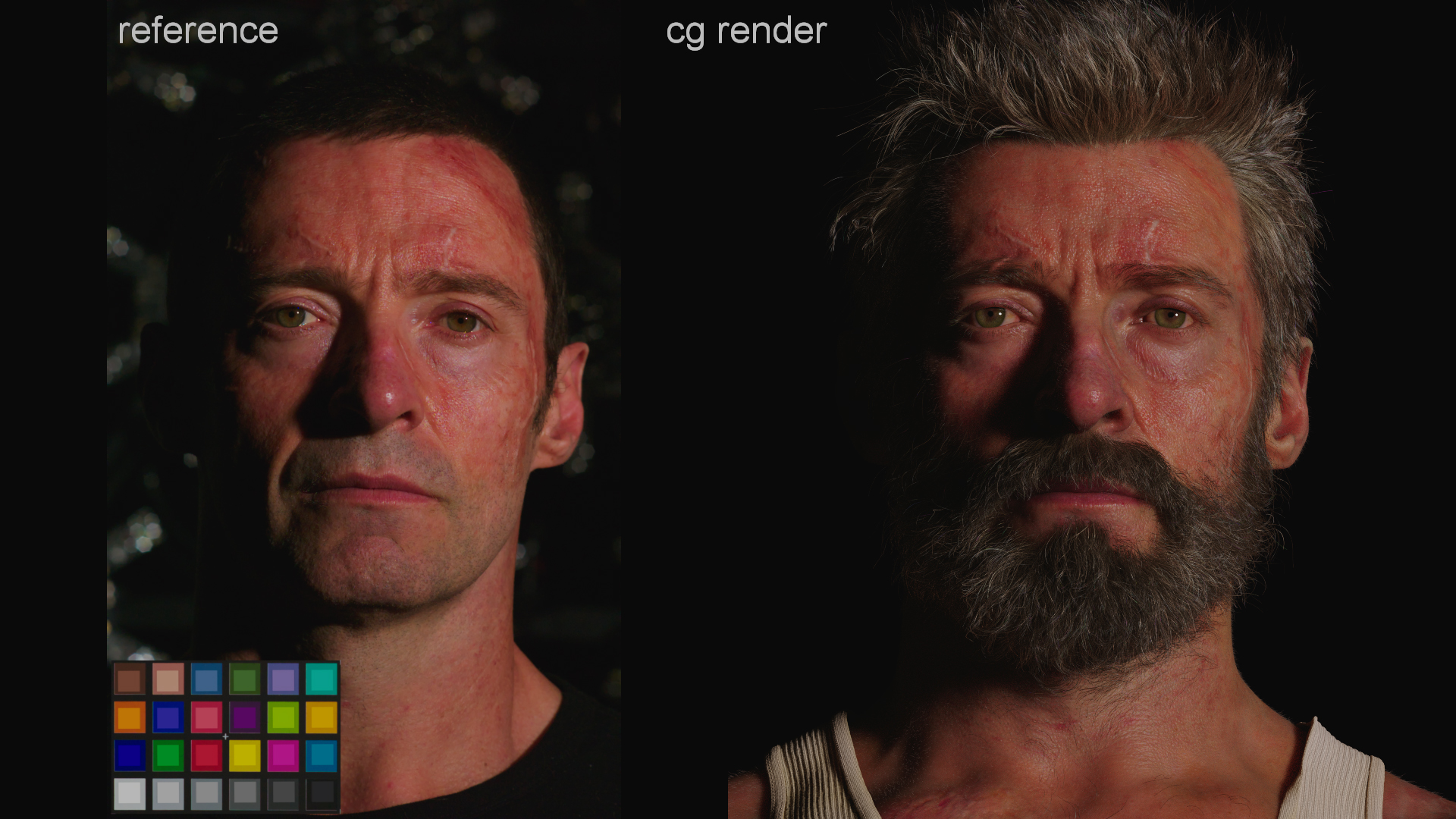
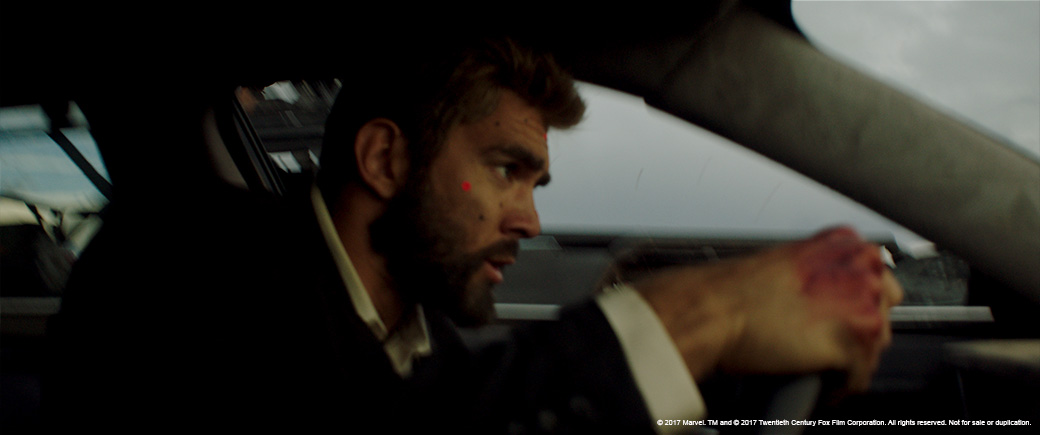
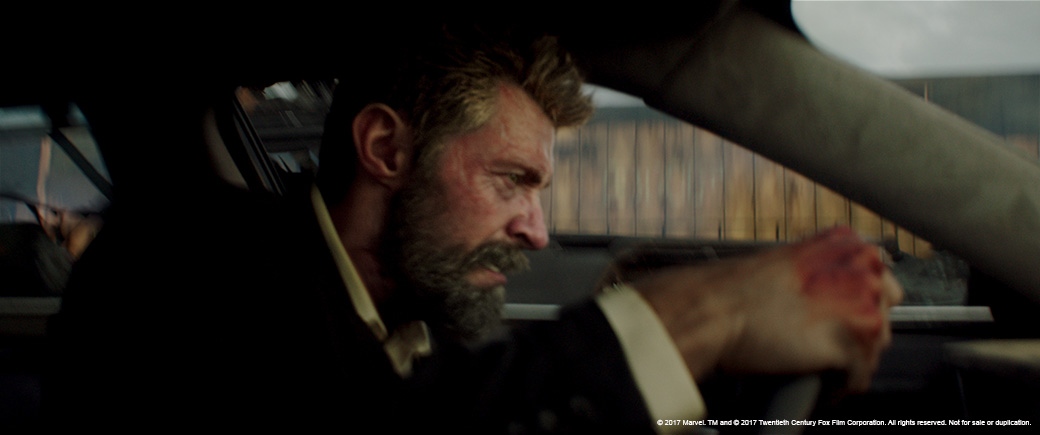
In VFX, deepfakes and digital doubles serve different purposes but can sometimes overlap. Deepfakes use AI to manipulate an actor’s face or voice in existing footage, allowing for realistic alterations like de-aging or face swaps without full 3D modeling. They are often quicker and more cost-effective but offer limited control for complex scenes. Digital doubles, on the other hand, are fully 3D recreations of actors, built from scans or manual modeling, giving filmmakers complete control over movement, lighting, and camera angles. They are essential for stunts, dangerous shots, or intricate CGI interactions, though they require more time and resources to produce. While deepfakes excel at quick, subtle alterations, digital doubles provide precision and versatility for fully controlled visual effects.
Photo sources: https://image-engine.com/insight/the-secrets-of-creating-real-looking-cg-digital-doubles/
Topic Discussion: Is it okay to replace actors’ faces using deep fake technology?
Replacing actors’ faces using deepfake technology opens up exciting creative opportunities, such as de-aging performers, recreating historical scenes, or safely executing dangerous stunts with digital doubles. This technology can reduce production costs, speed up filming, and allow smaller studios to produce high-quality content. For instance, companies like Framestore have successfully applied deepfake techniques to achieve realistic facial alterations with less reliance on traditional CGI.
However, this innovation raises serious ethical and legal concerns, particularly regarding actors’ rights. Using an actor’s likeness without explicit consent risks violating their personal and intellectual property rights, potentially resulting in unauthorized performances, misrepresentation, or defamation. This can lead to emotional distress and exploitation, damaging an actor’s reputation or career. Furthermore, the broader societal impact includes blurring the boundaries between reality and digital manipulation, which may erode public trust in media authenticity. Legal protections and regulations around deepfake use are still developing, making accountability for misuse unclear.
In conclusion, while deepfake technology offers significant benefits for filmmaking, it poses critical challenges to actors’ rights and media ethics. Its use must be carefully regulated, with clear consent and safeguards to prevent misuse and protect individuals.
━━━━━━━━━━━━━━━━━━━━━━━━━━━━━━━━━━━━━━
Homework
Brainstorm: Investigative Study Ideas & Plan For Your Proposal
What interests you within visual effects?
The role of a Creature Artist (3D Creature Modeler & Creature FX/TD) and how we make both real and imaginary creatures feel alive and believable through modeling, grooming, and muscle/skin/tissue fx.
- Possible Essay Title: From Real to Mythical: Creating Realistic Creature Art in Modern VFX
- Main Research Question:
How do VFX artists create realistic creature designs – from real animals to hybrids and entirely fantastical beings — through modeling, grooming, and comparative anatomy, and how has this approach evolved within the industry?
Topics to cover
– What defines realism in creature design?
– How does comparative anatomy help build believable fantasy creatures?
Bony landmarks
– How do approaches differ between real animal modeling and hybrid/imaginary creatures like dragons or gryphons?
– How has realism evolved in VFX? from early films like Jurassic Park to house of dragon etc.
– What technical and artistic skills are essential for a modern Creature Artist?
– What specialist roles exist within creature work in the VFX industry – such as Creature Modeler, Creature FX TD, and Creature Groom Artist – and how do their responsibilities and skill requirements differ?

ideas to dive into
— Realism in VFX creatures is rooted in comparative anatomy.
-
Idea: Every believable creature whether it is real or fantasy, starts with real anatomy. Understanding muscles, bones, and structure lets artists “build” from something the audience subconsciously recognizes.
-
Why its important: Even imaginary hybrids feel real when grounded in familiar biology.
-
How to evidence: Compare creature breakdowns from for example Hobbit, Fantastic Beasts, Game of Thrones, Avatar; analyze how real animal motion is reused.
— The evolution of creature realism follows technology.
-
Idea: Early films like Jurassic Park used practical effects and limited CGI; today’s work combines simulation, grooming, and complex shader networks to mimic skin and fur.
-
Why its important: Each technological leap has brought creatures closer to the edge of believability – sometimes even into the Uncanny Valley.
-
How to evidence: Timeline comparison (1990s animatronics → 2000s digital → 2020s simulation/groom tech).
- Creature artists balance science and imagination.
-
Idea: Artists must think like both sculptors and biologists – using real-world reference (anatomy, motion studies) and creative thinking to merge species.
-
Why its important: This dual mindset defines professional creature art and is central to portfolio development for aspiring artists.
-
How to evidence: Interviews, tutorials , and portfolio breakdowns from Weta FX or Framestore artists.
Explore the following
-
Discuss comparative anatomy – how muscle systems in animals often mirror human structures (e.g., quadriceps, deltoids, spine alignment). This helps artists “dissect” any creature into recognizable components.
-
Mention how modern grooming and simulation tools (XGen, Houdini, ZBrush FiberMesh) allow for hyperreal fur, skin, and secondary motion.
-
Explore the psychology of believability – why audiences emotionally connect with creatures that follow real physics and anatomy.
-
Touch on how this knowledge feeds into my own creature modeling and grooming portfolio, building skills for the industry. Do a project showcasing some of these eg. model an animal retopologize texture and groom it
Resources:
-
Allan McKay (2021) – Creating Realistic Creatures for Film and Games (Podcast)
– Explores anatomy, realism, and production pipelines for creature FX.
https://allanmckay.webflow.io/posts/episode-216
2. Framestore interviews & breakdowns as this studio focuses a lot on creature work but also other studios like weta, ilm etc.
Example article: https://www.cgrecord.net/2019/09/creature-and-character-fx-pipeline-with.html
3. Ken Hultgren (1951) – The Art of Animal Drawing
https://ia903209.us.archive.org/14/items/The_Art_of_Animal_Drawing_Ken_Hultgen_English/The_Art_of_Animal_Drawing_Ken_Hultgen_English.pdf
– Classic foundation on animal anatomy and comparative study for artists – lots of 3d modeling for creatures closely aligns to stages of drawing – blockout – base – detail etc.
4. Framestore. (2024).Rebel Moon — Part One: A Child of Fire. Available at:https://www.framestore.com/work/rebel-moon-part-one-child-fire[Accessed DD/MM/2025].
5. https://youtu.be/zJ6t0I1xg6E?si=G_VycKBminzydstU
Wētā FX. (2013). Making Smaug the Magnificent | The Hobbit: The Desolation of Smaug | Wētā FX. Available at: https://youtu.be/zJ6t0I1xg6E [Accessed 6 Oct. 2025].
6. Free anatomy masterclass by Nicolas Morel https://youtu.be/UniYfALAgcA?si=qwD4bjl1HGZUrmG2
7. How realistic samba, rafik and pride rock were created in Zbrush (I will focus on the samba part) by MPC & Disney; https://youtu.be/i0Su2k6QiPY?si=2ES_JJkGjNKwztDt
8. Jurassic Park (1993) – How were dinosaurs made in the early jurassic park films – https://youtu.be/8r01mk6F_Pk?si=wbqXopbiGd66Pqc6
━━━━━━━━━━━━━━━━━━━━━━━━━━━━━━━━━━━━━━
Week 2 – Developing a Research Area and is Generative AI the Future of Image-Making?
”Data is collected and observations are carried out; the results are then analysed in the context of prevailing theory and recommendations are made.”
Fill out the Investigative Study: VFX Research Template and Preparation form
Completed form download:
Completed Potential area of interest – Investigative Study Template v1
- Personal Reflection
Answer the following prompts to help shape your thinking and guide your early research. You don’t need to write long answers—just enough to capture your interests and direction.
- What aspects of VFX spark your curiosity or excitement? Think about moments, techniques, or ideas that make you want to dig deeper. Your response:
I’m most fascinated by how 3D Creature Artists & 3D Creature FX TD’s bring non-existent creatures to life in a believable way. The process of transforming a sculpted 3D model into something that feels physically present, with realistic anatomy, skin, fur and motion is something I aim to specialize in. I’m particularly drawn to the intersection between art and science in creature creation: how understanding anatomy, biomechanics, and physics can make real as well as fantasy CGI creatures feel emotionally and visually real.
- Are there particular tools, methods, or themes you’d like to explore further? This could be something you’ve seen in practice or want to understand more fully. Your response:
As I already have a solid foundation in creature sculpting using ZBrush, my first goal is to elevate my current skills by following a more traditional studio pipeline – starting from blockout, progressing to a detailed base sculpt and structural refinement, then moving through retopology, secondary detail passes, and the use of alphas for skin surface definition. I want to refine my workflow to reflect professional standards and produce cleaner, more production-ready models. Beyond that, I’m intending on further exploring Houdini and its applications in creature art – particularly in grooming and developing realistic muscle and tissue simulation systems and I want to refine my skills so that, alongside 3D creature sculpting, I can also specialize in the FX side of creature work, allowing me to develop a complete creature creation workflow for myself.
- Is there a film, artist, studio, or project that inspires your interest in VFX? Consider what draws you to their workstyle, innovation, storytelling, or something else. Your response:
I’m inspired by studios such as Framestore, Untold Studios, Platige Image, and Wētā FX for their remarkable creature work and technical innovation. Wētā FX, in particular, has been a major influence on me – their groundbreaking work on The Lord of the Rings and The Hobbit set new standards for realism, emotion, and storytelling in digital creature creation. I also admire artists like Nicolas Morel, Aritz Basauri, and Dmitrii Prosov, whose ability to bring digital creatures to life with such believability continues to push the boundaries of creature art. Their work motivates me to keep developing my own skills and to deepen my understanding of both the creative and technical processes that make digital creatures feel truly alive.
- Would you like to investigate something that challenges you creatively, technically, or academically? This is an opportunity to expand your thinking and deepen your expertise. Your response:
As mentioned earlier, while I’m fairly comfortable with ZBrush creature modelling, although I constantly strive to improve and refine my workflow to match industry standards and the practices of artists I admire, I am eager to explore the Houdini side of creature art, particularly FX work such as grooming and muscle/tissue simulation. This area presents both a creative and technical challenge, and developing these skills will allow me to build a more complete and professional creature creation workflow.
━━━━━━━━━━━━━━━━━━━━━━━━━━━━━━━━━━━━━━




